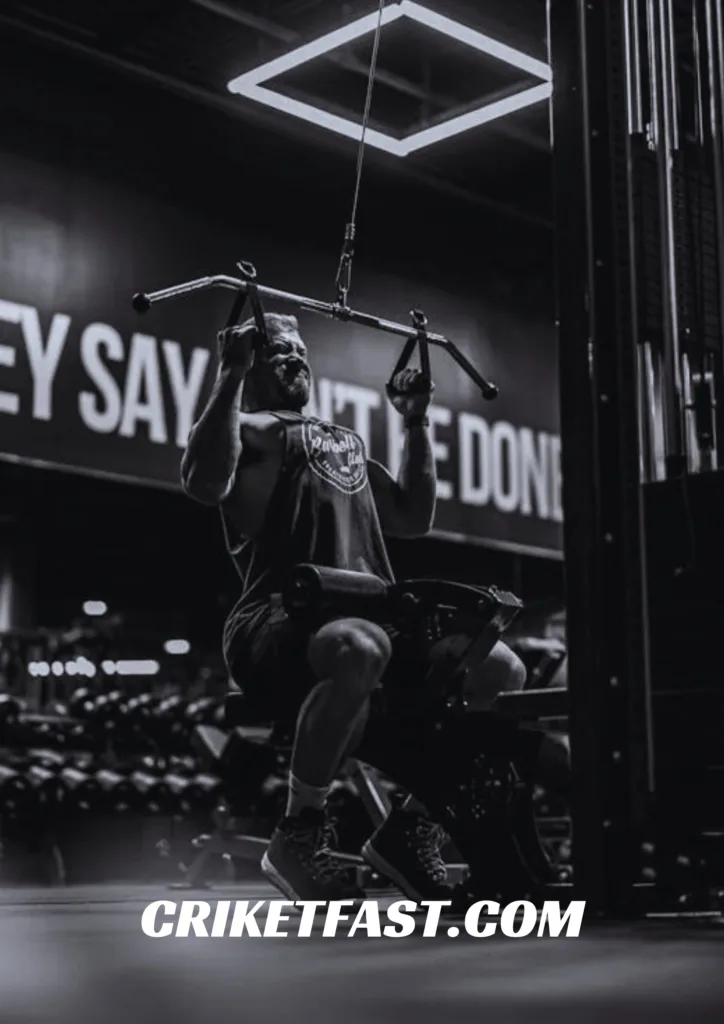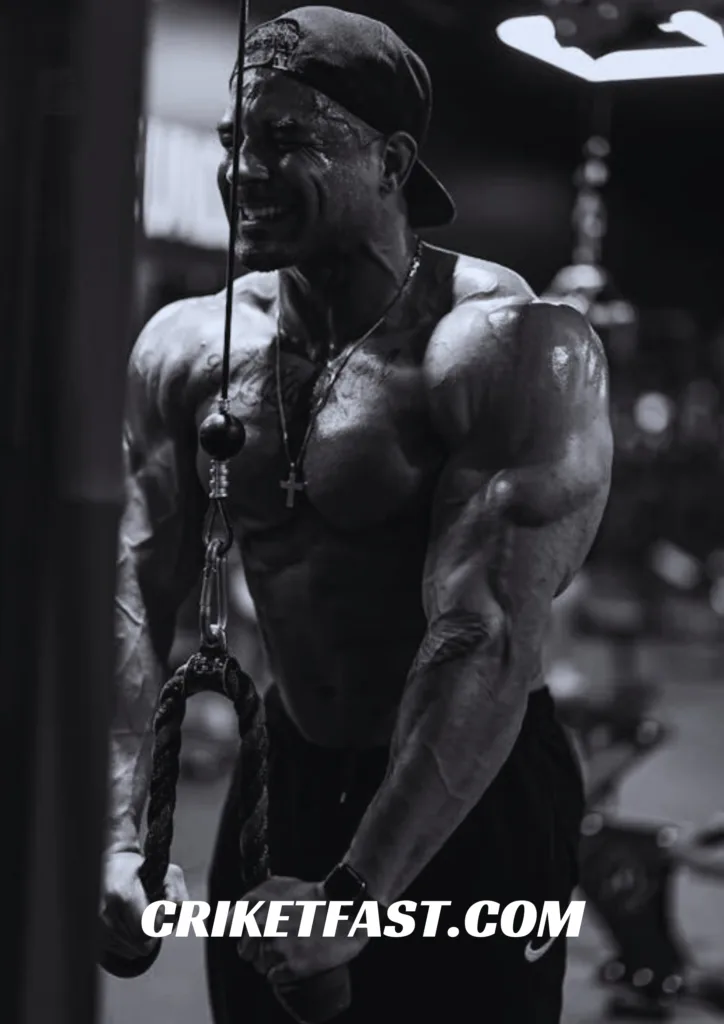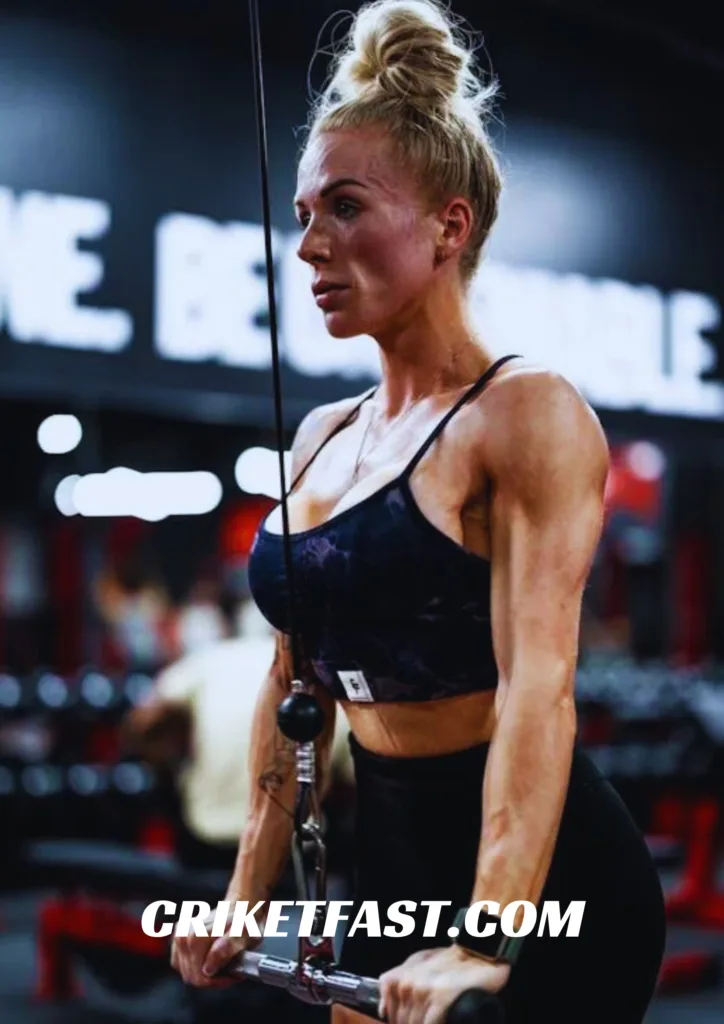The Best Cable Chest Exercise in GYM 2024
Cable Chest is a compound exercise that targets the serratus anterior, shoulders, and chest is the cable chest press. For anyone who wants to test their core stability or has joint problems, it’s a fantastic substitute for the barbell bench press.
In contrast to the bench press, the cable chest press permits unrestricted movement of the shoulder blades, potentially averting shoulder impingement and enhancing scapular health.
Best Cable Chest Exercises For Beginners
Here are some chest workouts you may perform with a cable machine if you’re starting and want to develop a large chest:

1. CABLE CROSSOVER
Top chest cable workouts include cable crossovers, which assist in building a larger and more defined chest by targeting the inner and outside regions of the pectoralis major muscle.
Step-By-Step Guide:
- Set the cable machine’s pulleys to a high position on both sides first. Grip the grips that attach to the cables in the machine’s middle.
- Step forward, keeping one foot just in front of the other for balance.
- Exhale and bring the handles downward and across your body, crossing them in front of you, while keeping your elbows slightly bent.
- When you finish the workout, take a quick break and compress your chest muscles.
- Breathe in and slowly turn the movement around to regain the starting posture.
Mistakes to avoid:
Steer clear of employing too much weight as this might cause bad form and shoulder discomfort. Additionally, avoid depending solely on the momentum by moving in a steady, controlled manner the entire time.
2. SEATED CABLE CHEST PRESS
Step-By-Step Guide:
- To get the handles of the cable machine in line with your mid-chest level, adjust the seat height.
- With your feet flat on the ground, sit up straight on the bench.
- Let out a breath and extend your arms fully by pushing forward with an overhand hold on the grips.
- After the exercise, pause briefly to feel the contraction in your chest muscles.
- Inhale and slowly return the handles to their initial position while retaining control.
Mistakes to avoid:
Throughout the workout, try not to use too much momentum or to arch your back. Keep your spine neutral and concentrate on driving the movement using your chest muscles instead of your shoulders or triceps.
3. CABLE FLY
Another beginning to intermediate chest cable exercise that helps to build chest width and separation is the cable fly, which works the main pectoralis muscles. They also work the triceps and front deltoids.
Step-By-Step Guide:
- Position yourself in the middle of the cable machine with the pulleys at a reasonable height.
- Step forward, one foot in front of the other, and place your palms forward to grasp the handles.
- Release the hold by drawing the handles forward and outward until your arms are parallel to the floor and your elbows are slightly bent.
- When the exercise comes to a finish, pause for a moment and feel your chest muscles tense.
- Breath in, then slowly and deliberately raise your arms back to the beginning position.
Mistakes to avoid:
Throughout the exercise, pay attention to keeping your elbows slightly bent and refrain from rounding your shoulders forward.

4. CABLE CHEST PULLOVER
This cable chest workout helps to increase upper body strength and muscle definition by focusing on the muscles of the chest, shoulders, and upper back. Additionally, it improves shoulder joint flexibility and, by fortifying the muscles that support the upper body, can help with posture.
Step-By-Step Guide:
- Attach a straight or inclined bar to the cable machine’s high pulley.
- Lay flat on a bench perpendicular to the machine with your feet firmly planted on the ground, your head closest to it.
- With the arms completely stretched above the chest and the elbows slightly bent, grasp the bar with an overhand grip that is slightly wider than shoulder-width apart.
- Controllably lower the bar toward the floor while keeping your core active and your chest muscles taut.
- Lower the bar until your shoulders and chest feel stretched, being careful not to put too much strain on your shoulder joints.
- Pull the bar back up to the starting position by using your chest muscles, moving slowly and deliberately.
- Focus on 3–4 sets of 10–15 repetitions, modifying the weight as necessary.
Mistakes To Avoid:
Steer clear of using too much weight since this can put a strain on the shoulder joints. Pay attention to keeping your form correct and experiencing the stretch in your chest muscles. Avoid excessive back arches and letting your lower back rise off the bench.
Keep your position steady and your core active throughout the exercise to avoid injury.
Chest Cable Exercises?
Exercises using cables for the chest have several important advantages over conventional barbell or dumbbell bench presses. Here are a few of the most important ones to be aware of:
Enhanced mobility and stability in the shoulder: Many of the smaller stabilizing muscles surrounding the shoulder joint, which is an important structure in pressing actions centered on the chest, can be effectively targeted with cable exercises.
Less demanding on joints and safer: Compared to bench pressing or chest pressing, cable chest exercises often put less strain and stress on your joints. Therefore, these are ideal for anyone who already has an injury or weakness in this area, or who wants to recover before returning to their normal weight.
Better posture and strength in the core: Since most cable workouts are done while standing, they primarily focus on your back and core. This will help to strengthen the muscles that support your spine and shoulder blades, which will benefit other full-body exercises as well as general posture improvements (try this tasty little superset of the TRX Atomic Push-up for a great full-body and chest workout).
Achieve a more effective and focused pec contraction: Being able to isolate the chest muscles results in a more potent pump. Cable workouts are ideal for enhancing the form and structure of the chest because they are a very efficient method of targeting the chest especially. When paired with a complex movement like the barbell or dumbbell chest press, cable chest exercises are also an excellent choice for “superset training.”
Get rid of imbalances: Exercises with cables are unilateral. For instance, they simultaneously offer both sides of the body isolated resistance. As a result, one arm or side cannot make up for any deficiencies in the other. This prevents one side from being stronger than the other and contributes to stability.
conclusion
In conclusion, cable chest exercises offer benefits such as improved shoulder mobility, reduced joint strain, enhanced core strength, and targeted pec muscle engagement. These exercises are particularly beneficial for individuals with joint issues or those looking to strengthen their core and improve posture.
Read: The Best Arm Workout In The Gym

FAQs
Q: What is the cable chest press?
A: A compound exercise that works the serratus anterior, shoulders, and chest is the cable chest press
Q: Why is the cable chest press a great substitute for the barbell bench press?
A: Better core stability and less strain on the joints make the cable chest press an excellent alternative to the barbell bench press.
Q: Who would benefit from doing cable chest presses?
A: Pressing a cable into your chest can help strengthen your serratus anterior, shoulders, and chest. It’s also a fantastic choice for anyone wishing to assess their core stability or for individuals with joint issues.
Q: How does the cable chest press target the serratus anterior?
A: The cable chest press targets the serratus anterior by requiring the muscles to stabilize and control the movement of the shoulders and arms.
Q: Is the cable chest press suitable for beginners?
A: Yes, novices can benefit from the cable chest press if they begin with lower weights and concentrate on using the right form and technique.

